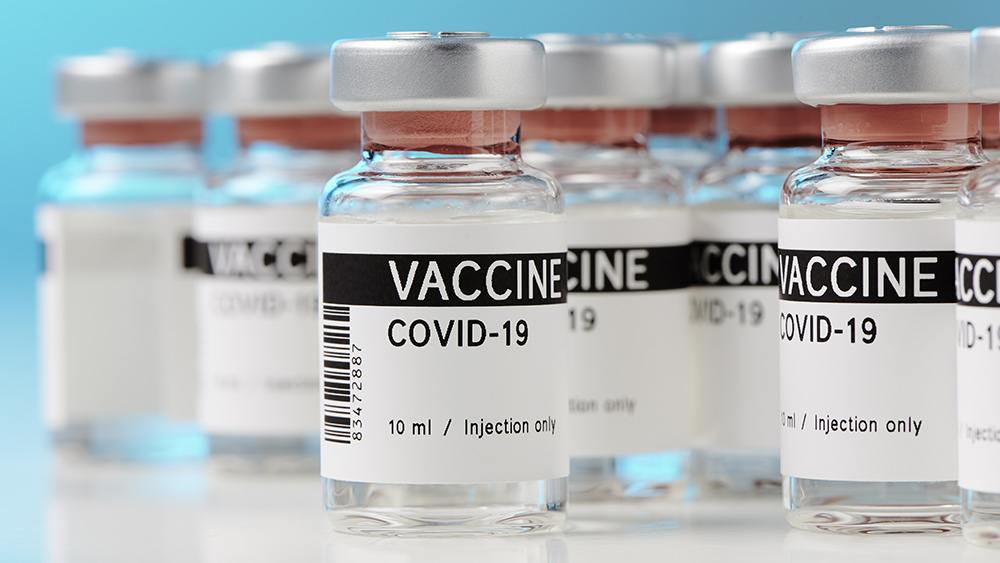Dietary fiber is important for brain health, especially for seniors
12/25/2018 / By Michelle Simmons

As a part of the aging process, microglia or the brain immune cells of humans and mammals alike become chronically inflamed. In turn, they produce chemicals that impair cognitive and motor function. Fortunately, researchers from the University of Illinois (U of I) found that this process may be slowed down with dietary fiber.
The study, which was published in the journal Frontiers in Immunology, highlights the importance of fiber consumption. Dietary fiber is beneficial as it promotes the growth of good gut bacteria. When these bacteria digest fiber, they produce short-chain-fatty-acids (SCFAs), such as butyrate, as byproducts. (Related: Fight arthritis with breakfast: Fiber-rich food nourishes your microbiome, reduces chronic inflammation in joints.)
In the study, the researchers fed young and aged mice either one percent low-fiber diets or five percent high-fiber diets for four weeks. Then, they measured the levels of butyrate and other SCFAs in the blood and inflammatory chemicals in the intestine.
Results showed that the high-fiber diet altered both the young and old mice’s gut microbiome and increased butyrate, acetate, and total SCFA production. However, only the old mice fed with low-fiber diets exhibited intestinal inflammation, emphasizing the vulnerability of being old. The high-fiber diet also significantly reduced the intestinal inflammation of the old mice, which indicates that dietary fiber can change the inflammatory environment in the gut.
Subsequently, the researchers looked at signs of inflammation in the brain. They analyzed about 50 unique genes in microglia and discovered that the high-fiber diet decreased the inflammatory profile in aged animals.
These results indicated that butyrate reduced inflammation on microglia and improved memory in old mice. Butyrate worked by inhibiting the production of damaging chemicals produced by inflamed microglia. One of those chemicals is interleukin-1B, which has been linked to Alzheimer’s disease in humans. Because people are less likely to consume sodium butyrate directly because of its bad odor, the researchers suggested that eating more foods rich in fiber is a practical and natural way to increase butyrate levels.
Based on these findings, the researchers concluded that increasing butyrate by eating more fiber-rich foods could counteract the age-related gut microbial imbalance. This could potentially result in neurological benefits.
“We know that diet has a major influence on the composition and function of microbes in the gut and that diets high in fiber benefit good microbes, while diets high in fat and protein can have a negative influence on microbial composition and function. Diet, through altering gut microbes, is one way in which it affects disease,” explained Jeff Woods, professor in the Department of Kinesiology and Community Health at U of I, and one of the authors of the study.
Following a high-fiber diet
For beginners, it is best to increase your fiber consumption slowly. Increasing fiber intake too fast can cause an upset stomach. Also, drink lots of fluids to help keep waste moving through the digestive system smoothly. After a few weeks, your body will adjust to higher fiber intake. You should also eat a variety of fiber-rich foods throughout the day. Listed below are the top 10 foods with the most fiber content:
- Chia seeds
- Popcorn
- Almonds
- Dark chocolate
- Oats
- Artichoke
- Split peas
- Lentils
- Chickpeas
- Avocado
When you start following a high-fiber diet, you may naturally find yourself eating less meat as fiber can only be found in plant-based foods like whole grains, fruits, vegetables, nuts, and seeds. Add more fiber-rich foods into your diet to help you eat slower, savor your meals, and prevent overeating as they help keep you full longer.
Read more news stories and studies on natural ways to preserve cognitive and motor function by going to Brain.news.
Sources include:
Submit a correction >>
Tagged Under:
aging, anti-aging, Brain, brain function, brain health, butyrate, cognition, cognitive function, elders, epigenetics, fiber, fiber diet, food science, gut bacteria, gut health, high-fiber diet, ingredients, longevity, microbiome, microglia, motor function, neuroinflammation, older people, research, seniors
This article may contain statements that reflect the opinion of the author
RECENT NEWS & ARTICLES
COPYRIGHT © 2017 RESEARCH NEWS





















